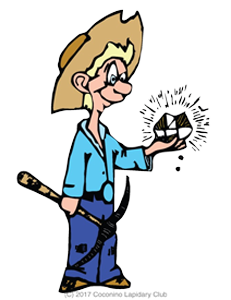Fracture in mineralogy is the texture and shape of the surface formed when the mineral is fractured. Fracture differs from cleavage and parting, which involve clean splitting along a plane surface, as it produces rough irregular surfaces [Ref1]. The appearance of fracture surfaces among minerals is highly varied and is a useful tool in identification. In this part of my Blog I’ll describe the fracture surfaces broadly seen in minerals.
Minerals
FRACTURE IN MINERAL IDENTIFICATION
GALLERY OF CHINESE CARVED JADE ART
o the great advantage of the beauty of their art, Chinese carvers of jade were guided by themes and decorative motifs in the shaping of their carvings and the choices of decorative motifs adorning them[Ref1-7].
HISTORY OF JADE CARVING IN CHINA
From the late Neolithic Age (circa 3500 BC-2070 BC) into today the crafting of jade art objects in China has produced beautiful and magnificent art objects which exhibit remarkable diversity of both color and form as shown by the carved nephrite jade pendant with phoenix pattern and the funerary Bi Disc with rain pattern in Figure 1[Ref1]. In this blog I’ll describe the tools and techniques with their technological advances and show corresponding art objects of increasing complexities of design and execution.
MINERAL STUFF: THE GEMSTONE JADE
Since ancient times jade[Ref1] has been used by artisans to create beautiful jewelry and works of art. Art objects of jade have been carved in China for more than 6000 years[Ref2] as exemplified by the jade dragon carved during the Zhou Dynasty (5th – 4th century BC) as shown in Figure 1. In Central America,. . . Read More
PALEONTOLOGY OF AMBER
In this Blog I’ll describe how biomaterials including animal and plant fossils are included and preserved in amber formed from tree resin, which by its stickiness can entrap objects which contact its surface as shown in Figure . With further addition of the resin the object is sealed within the resin and out of the. . . Read More
MINERAL STUFF: AMBER, THE GEM
Amber is a hard resin formed from tree sap by fossilization and is many millions of years old[Ref1]. Since Neolithic times (about 9000-3000 BC) and before the Copper Age[Ref]2) amber has been highly valued as a gemstone and used to create beautiful jewelry and artworks. Wide use of amber in Early Europe and in the. . . Read More
Art Deco Rubies
Art Deco is my favorite style of jewelry, with its flair of design and the use of unusual combinations of gemstones. Art Deco is a style of architecture and design which first appeared in France just before World War I, reached its high point during the 1925 Paris Exposition of Decorative Arts, and extended into. . . Read More
Ancient Rubies
In this continuation of blogs about the corundum gem varieties, sapphire and ruby, I will first describe the trade routes that first brought the gems, from their mines in the East, to the Roman Empire, then to the rest of Europe. I will also present a gallery of ruby jewelry and artworks designed and made. . . Read More
HARDNESS: A MECHANICAL PROPERTY OF USE IN IDENTIFYING MINERALS
Along with the colors and crystal forms of minerals, their mechanical properties such as the hardness. tenacity, and habits of structural failure can be very useful tools in identifying an unknown mineral. In this first Blog on the use of mechanical properties in identifying minerals I’ll focus on hardness and describe the Moh’s Hardness Scale,. . . Read More
Sapphire – Art Deco
Art Deco is my favorite style of jewelry with its flair of design and the use of unusual combinations of gemstones. Art Deco is a style of architecture and design which first appeared in France just before World War I, reaching its high point in the 1925 Paris Exposition of Decorative Arts, and extending into. . . Read More
